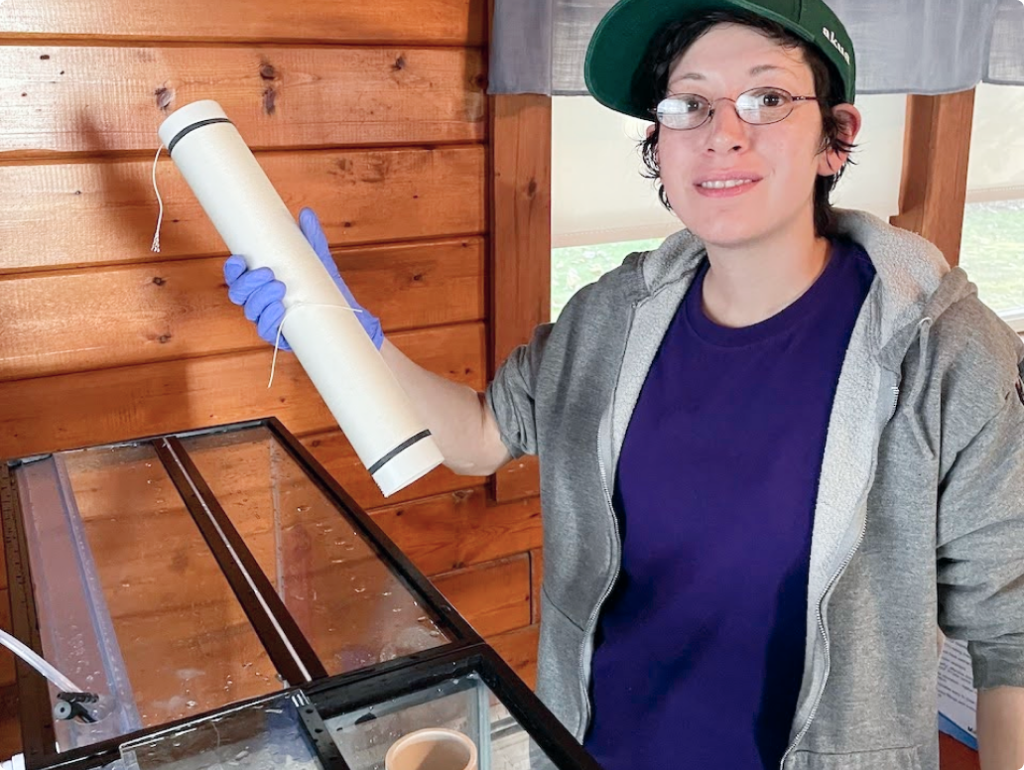This video shows spool wrapping in action at the Alutiiq Pride Marine Institute in Seward, AK.
Spoolerator
A mechanical device designed to quickly and efficiently wrap spools with seed string.
Back to: Preseason Preparation
You will want to wrap your spools as soon as possible. While you are winding your spools, be on the lookout for a few main factors as quality control: no gaps between wraps, no overlapping wraps, and tight wraps. Gaps between wraps will result in inconsistent lengths of seedstring on your spools. Overlapping wraps can cause issues when seeding your lines on your farm by creating snags or loops. Loose wraps can result in seedstring sliding off of spools in the nursery, during transport, or seeding, as the seedstring will loosen up a little once it is wet. All of these issues can significantly impact your spool quality.
You can wrap your spool by hand, but it’s excruciatingly slow. To speed up the process, we highly recommend using a spoolerator, as described in the Hatchery Equipment course.
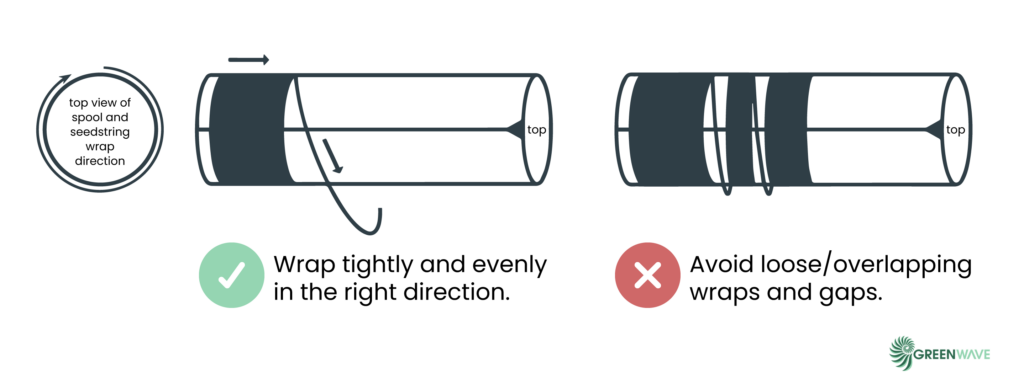
You can wrap your spool by hand, but it’s excruciatingly slow. To speed up the process, we highly recommend using a spoolerator, as described in the Hatchery Equipment course.
One common way to configure a spoolerator is by attaching a paint roller to a hand power drill. Slide the spool over the paint roller and guide the string evenly onto the spool as it wraps.
A mechanical device designed to quickly and efficiently wrap spools with seed string.
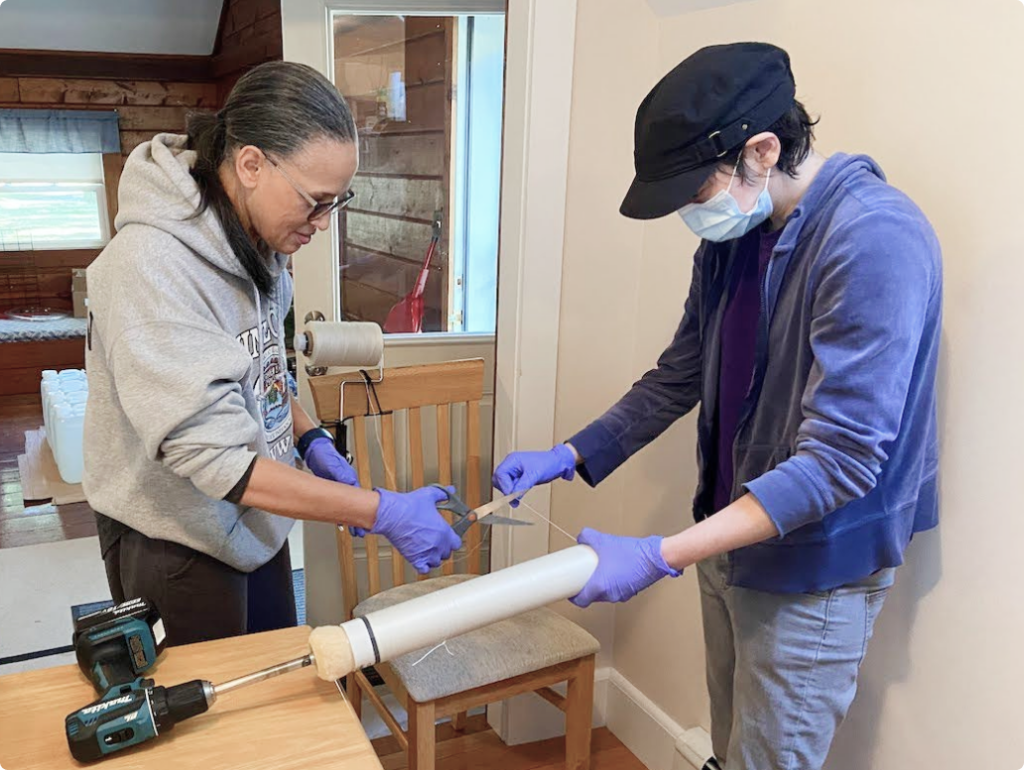
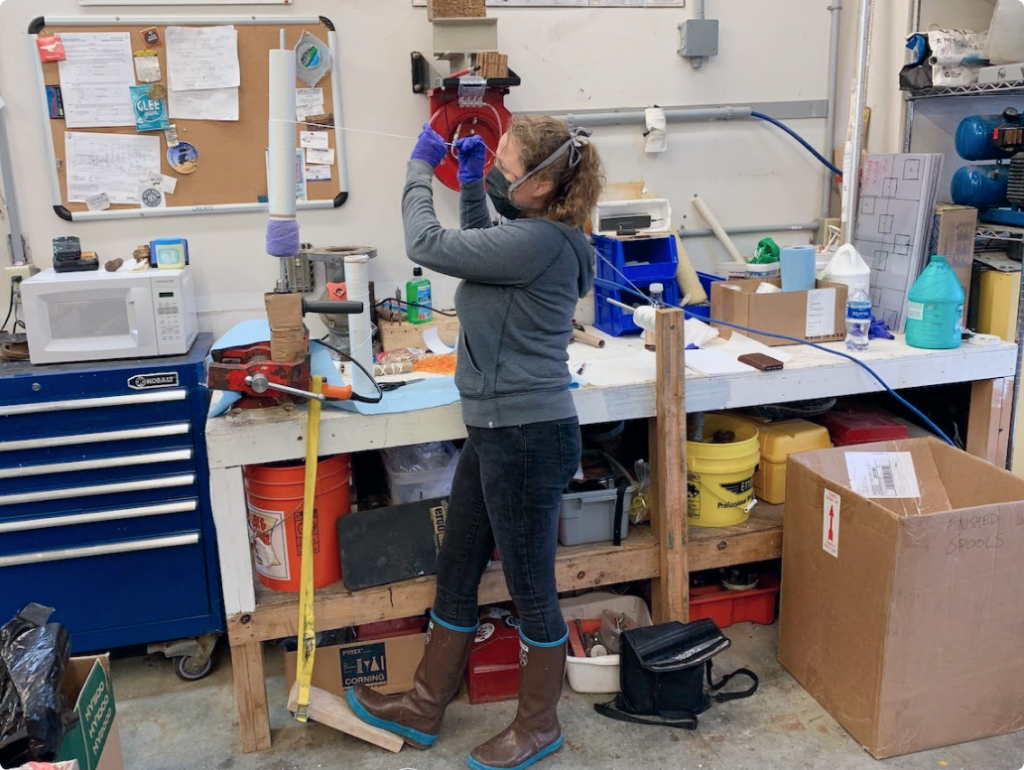
Other hatcheries have used mechanisms from sewing machines, so the motor can rotate the spool while the speed is controlled by a foot pedal.
Always wrap the seedstring around your spools in the clockwise direction, if looking down at your spool from the top, so that your seedstring will wrap around your growline in the same direction as the lay of the growline.
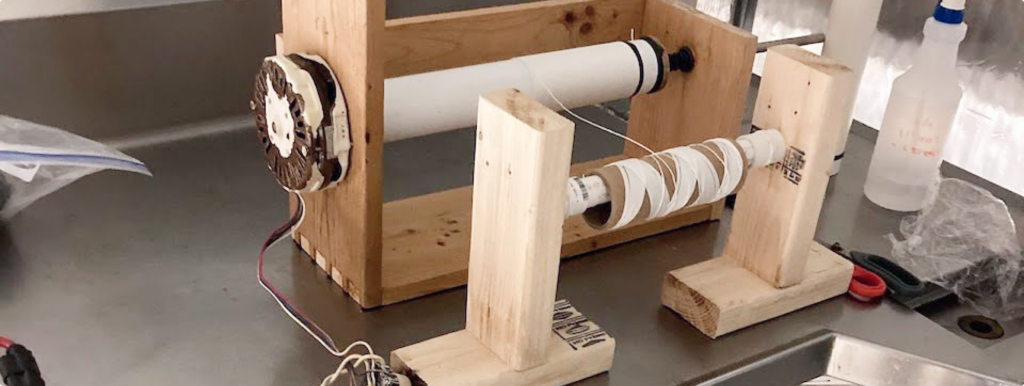
When wrapping your spools, we suggest tying a 2” piece of seed string in the middle of the spool. This tail will be helpful for snipping small pieces off of to observe with the microscope as the kelp starts to grow. We’ll outline this process in more detail in the Monitoring Growth course. It may also be helpful to tie a bowline or other loop knot at the end of your seedstring so you can use it to pull on when you are seeding in the field.
Once your spools have been wrapped with seed string, wrap them in Saran wrap to keep them clean, and store them somewhere clean. At GreenWave, in the past, we have placed our prepared spools in the freezer until they’re needed, as an extra precaution to kill anything that could be living on the seed string. A few days prior to seeding your hatchery, remove the spools from the freezer and soak the wrapped spools in distilled or deionized water, and then sterile seawater to leach out any chemicals that may still be in the seed string. Refer to the protocol for Soaking/Leaching Spools for more specific instructions.
